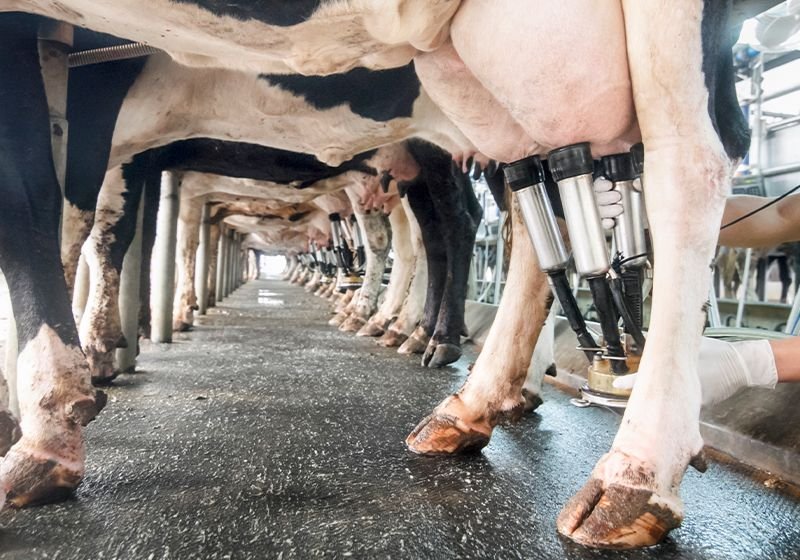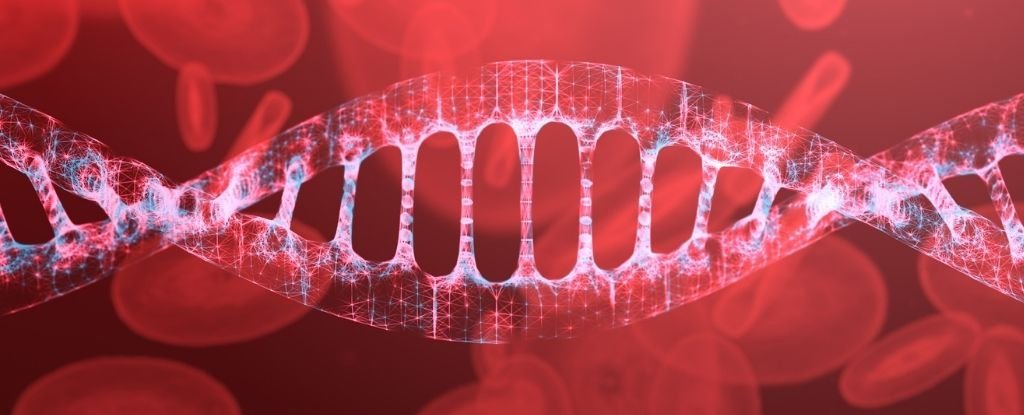In March 2024, the USDA confirmed that dairy cattle in Texas and Kansas had become infected with a highly pathogenic avian influenza H5N1 strain. Scientists have been monitoring H5N1 infections in wild bird and domesticated poultry populations since the strain popped up in North America in 2021, but they thought that bovines were resistant to influenza A viruses (IAV).
“[Cow infection] came as a complete surprise,” said Lars Erik Larsen, a veterinary virologist at the University of Copenhagen.
In a preprint posted on bioRxiv, which has not undergone peer review, Larsen and his team measured the distribution of IAV receptors across different cow tissues in search of a mechanistic explanation for how cows contracted the bird flu.1 While their preliminary findings helped explain the symptoms reported in infected cows, they also sparked a new hypothesis on whether cows are potential IAV mixing vessels for the generation of novel flu viruses that could acquire human-to-human transmission.
Wild birds are the natural reservoirs for IAV, but mammalian spillovers into pigs, horses, and humans have occurred.2 For example, the IAV H1N1 and H3N2 subtypes originated in wild birds but evolved to routinely circulate in humans on a seasonal basis. However, the news of the virus spreading between cows came out of left field: Cows experience outbreaks of influenza D viruses, but IAV infections are less common, so scientists did not consider them to be susceptible hosts for H5N1.3

Larsen said that one of the most surprising findings coming from the US reports is that huge amounts of virus are found in the milk, but very little nestles in the respiratory tract. “It seems like this virus in bovines behaves completely differently than in other species,” said Larsen. These findings suggested that the virus may enter and replicate inside cells housed in the udder, but no one had looked at IAV receptor expression in these tissues.
To transfer their viral genomes, IAV bind to sialic acid (SA) receptors on epithelial cells. One of the main reasons that transmission of IAV from birds to humans is low is that avian viruses prefer to enter cells through the SA-α2,3 receptor types, which are highly expressed in birds but less common in humans.4 In order to jump these host barriers and infect humans, avian viruses must evolve to bind to SA-α2,6 receptors, the dominant type in humans.
Larsen, whose research primarily focuses on avian and swine influenza viruses, previously measured the expression of these receptors in the pig nasal mucosa using two different plant lectins that bind to either the α2,6 human receptor or the α2,3 avian receptor.5 With tools for making these measurements already in hand, Larsen and his team analyzed the expression of these receptors in cow brain, respiratory tract, and mammary gland tissues that were archived in the freezers in the pathology department of his university’s veterinary school.
Larsen and his team observed high expression of the α2,3 avian receptor in the bovine mammary glands, providing a rationale for why this virus appears to readily replicate in this tissue. “That can explain why we find so much virus in the milk,” said Larsen. They also found some expression of the avian receptor in the respiratory tract but very little evidence of the receptor in the brain, which matches the minimal respiratory or neurological symptoms observed in infected cows.
When they analyzed the data on the human receptor, the team was surprised to also find high expression in the mammary glands, a finding that brought pigs to mind.
Pigs provide a perfect platform for IAV looking to acquire new hosts. They coexpress both the avian and human receptors in their respiratory tracks. This means that pigs infected with both human and avian flus provide these viruses with a space to mingle and swap genome segments to generate new IAV that the human immune system has never seen before. This happened in 2009 when influenza strains of avian, swine, and human origin infected a pig, underwent genetic reassortment, and created a novel H1N1 strain that kicked off the last swine flu pandemic.6
Although the preliminary evidence from Larsen’s group provides a mechanistic explanation for why H5N1 is appearing in dairy cattle milk, what worries some scientists is that it also suggests that cows could be a potential mixing vessel for avian and human IAV. “That’s just in theory,” said Larsen. “I don’t think that the risk is very high.”
Brian Wasik, a virologist at Cornell University who was not involved in the study, said that he welcomes the preliminary analysis on IAV receptor distribution in bovine mammary tissue, which he noted has been limited in the literature. “A rapid dissemination of information about that is always great and open for the community to start building hypotheses of how we understand how influenza is moving in this particular tissue,” said Wasik.
With respect to the “mixing vessel” hypothesis, Wasik said, “[They] are good hypotheses and worth discussion and worth setting the framework for future research. My concern, and what I expressed publicly, is that the concern of other people overinterpreting those narrow results and moving clearly beyond the hypothesis framework into something larger.”
Unlike a protein receptor, which is transformed from a nucleotide sequence via transcription and translation, SA is carbohydrate that is synthesized by enzymatic processes. “There’s a lot of heterogeneity and kinetics in that process, and you get lots of different chemical variations of these receptors,” said Wasik.
These enzymatic processes lead to different subtypes of the SA-α2,6 receptor: the N-Glycolylneuraminic acid (Neu5Gc) and N-Acetylneuraminic acid (Neu5Ac) forms. Neu5Gc is prevalent across different mammals, but the gene that encodes the enzyme that converts Neu5Ac into Neuro5Gc is absent in humans.7 Wasik noted that Sambucus nigra lectin, the molecule used in this study to detect the presence SA-α2,6, has a broad binding profile and therefore cannot distinguish between these two subtypes. Therefore, bovine may not express the Neu5Ac form of SA-α2,6 that the human influenza strains use to enter cells.
“The methodology needs a lot more rigorous verification,” said Wasik, who noted that he’d like to see a deeper dive into the chemistry of the bovine receptors to better understand what they look like and how influenza binds to them. “I’m sure that those studies are coming from this group and a number of others, but at this time we do not have a definitive understanding of what’s present in that tissue,” he said.
Scientists still need to determine whether cow mammary glands are susceptible to human IAV. More than 70 years ago, researchers injected cow udders with human influenza virus and observed viral replication, suggesting that it is possible.8 However, these were direct injections and it is still unclear if or how human transmission to the mammary glands would occur. Scientists still don’t know the mode of transmission of the avian virus into cows.
“There are so many unanswered questions about this bovine infection,” said Larsen.
In addition to increasing the sample size, Larsen would like to look more closely at the receptor distribution in the respiratory tract. “What we fear [is] that this virus starts to spread among cows by droplets because then the risk of human exposure will increase,” said Larsen.
“Given these are all hypotheses and we don’t know what this virus is going to do next, my suggestion is we stamp it out as quickly as possible,” said Wasik. “While we’re concerned about human risk and now this new risk to cattle, what we’re seeing is one of the largest ecological die-offs of avian species and sea mammals and a number of other different spillovers.”
References
- Kristensen C, et al. The avian and human influenza A virus receptors sialic acid (SA)-α2,3 and SA-α2,6 are widely expressed in the bovine mammary gland. bioRxiv. 2024;2024.05.03.592326.
- Abdelwhab EM, Mettenleiter TC. Zoonotic animal influenza virus and potential mixing vessel hosts. Viruses. 2023;15(4):980.
- Sreenivasan CC, et al. Influenza A in bovine species: A narrative literature review. Viruses. 2019;11(6):561.
- Zhao C, Pu J. Influence of host sialic acid receptors structure on the host specificity of influenza viruses. Viruses. 2022;14(10):2141.
- Kristensen C, et al. The avian influenza A virus receptor SA-α2,3-Gal is expressed in the porcine nasal mucosa sustaining the pig as a mixing vessel for new influenza viruses. Virus Res. 2024;340:199304.
- Trifonov V, et al. Geographic dependence, surveillance, and origins of the 2009 influenza A (H1N1) virus. N Engl J Med. 2009;361(2):115-119.
- Chou HH, et al. A mutation in human CMP-sialic acid hydroxylase occurred after the Homo-Pan divergence. Proc Natl Acad Sci U S A. 1998;95(20):11751-11756.
- Mitchell CA, et al. Further experiments relating to the propagation of virus in the bovine mammary gland. Can J Comp Med Vet Sci. 1953;17(5):218-222.










